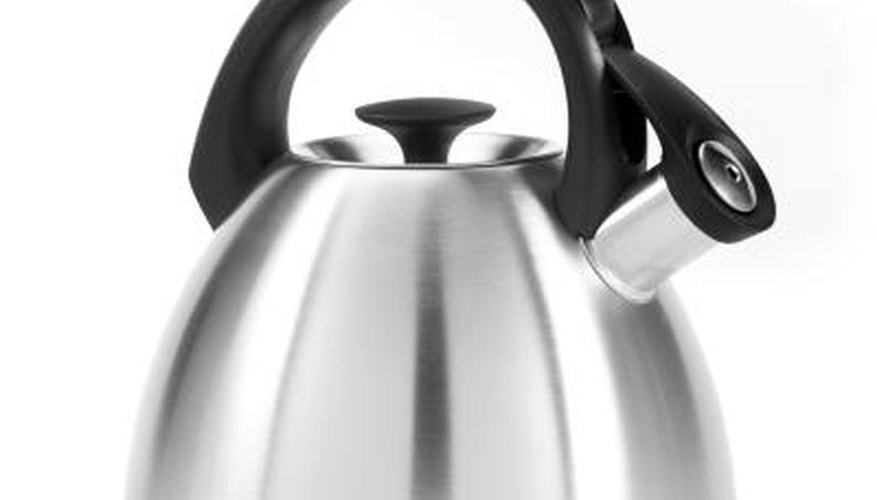Most homes have a kitchen kettle for boiling water, with two basic styles available. These include hob, or gas burner, kettles and electric kettles. While the basic components of all models include a handle, spout and body, variations in style provide a range of looks to match in with different kitchen decor. The choices available include a few types of material.
Stainless Steel
A common option used in kettle manufacture, stainless steel can provide advantages both in terms of looks and material properties. Many kitchen appliances use stainless steel in their manufacture, for its clean, attractive appearance, and a kettle in the same material can therefore produce a coordinated look. The properties of stainless steel also make it a good choice for kettle production. It does not corrode easily, has good resistance to fire and heat, and is a hygienic material considered easy to clean and care for.
- A common option used in kettle manufacture, stainless steel can provide advantages both in terms of looks and material properties.
Glass
Using glass as a kettle material can produce an appliance that has aesthetic and practical appeal. Glass has a clean look, with the type used in kettle manufacture typically comprising a strengthened material such as borosilicate glass. This material has better resistance to heat, and greater strength than standard glass. It therefore has greater durability, making it more appropriate for kettle manufacture. A glass kettle also has the practical quality that the water level in the appliance can easily be seen.
- Using glass as a kettle material can produce an appliance that has aesthetic and practical appeal.
- A glass kettle also has the practical quality that the water level in the appliance can easily be seen.
Plastic
A more modern innovation in electric kettles involves the use of heat-resistant plastics. While plastics were used to make kettle handles for many years, the material has also become one of the most common in the manufacture of the body of electric kettles. Polypropylene, for example, has a high melting point and resistance to chemicals, making it a suitable choice for kettle production. In many cases, clear plastic will form a viewing window in kettles of other materials, for the purposes of showing the water level.
- A more modern innovation in electric kettles involves the use of heat-resistant plastics.
- In many cases, clear plastic will form a viewing window in kettles of other materials, for the purposes of showing the water level.
Ceramic
A ceramic kitchen kettle can produce a more traditional look, coordinating with ceramic cups and teapots, and the material has a use in the production of both hob and electric kettles. The properties of ceramic make it an appropriate material for kettles. It is chemically stable, meaning it will not react with water as it boils, and has excellent thermal insulation, meaning it keeps the contents hotter for a longer period after heating is completed. Ceramic can also feature attractive designs, in comparison to the plainer look of other kettle materials.
- A ceramic kitchen kettle can produce a more traditional look, coordinating with ceramic cups and teapots, and the material has a use in the production of both hob and electric kettles.
